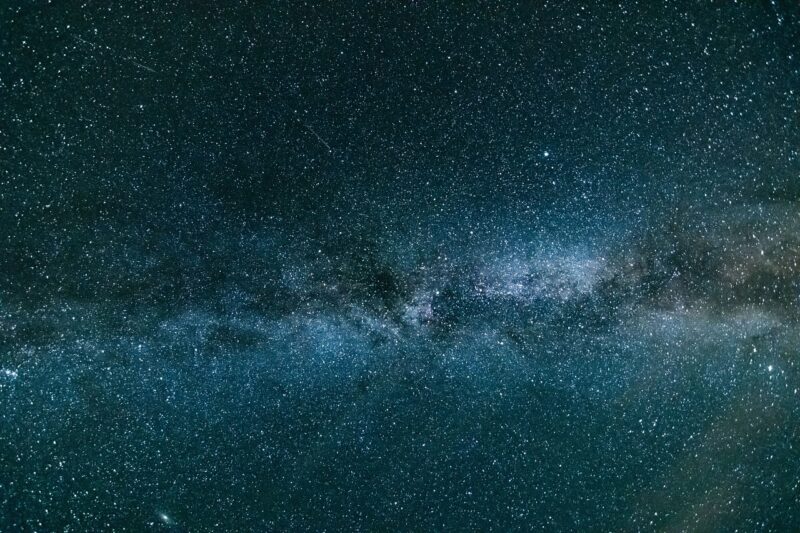
The universe is an endless source of fascination and mystery, filled with phenomena that challenge our understanding and spark our imaginations. From the vastness of space to the intricacies of time, there is so much we have yet to learn. In this article, we delve into ten mind-blowing facts about the universe that will leave you in awe and wonder.
1. The Universe is Expanding
Scientists have known since the early 20th century that the universe is expanding, but did you know that it is doing so at an accelerating rate? Observations of distant supernovae have revealed that galaxies are moving away from each other faster than ever due to an unknown force dubbed dark energy. This mysterious energy is believed to make up approximately 68% of the universe, yet its nature remains one of the biggest enigmas in modern astrophysics.
2. There are More Stars in the Universe than Grains of Sand on Earth
It’s almost unimaginable, but recent estimations suggest that there are around 100 billion to 200 billion galaxies in the universe, each containing millions to trillions of stars. When compared to the estimated number of grains of sand on all the beaches on Earth, which falls around 7.5 quintillion, the count of stars far surpasses that, emphasizing the vastness of our cosmos.
3. A Day on Venus is Longer than a Year
While we experience 24-hour days and 365-day years, Venus takes about 243 Earth days to complete a single rotation on its axis, making its day longer than its year, which only lasts around 225 Earth days. Interestingly, Venus spins in the opposite direction to most planets, leading to a unique pattern of sunrise and sunset.
4. There are Floating Water Oceans in Space
Scientists discovered massive clouds of water vapor floating in space, indicating the presence of water in forms far beyond what we know on Earth. One of the largest detections is in the quasar APM 08279+5255, where water clouds are equivalent to 140 trillion times all of Earth’s oceans combined. Such findings hint at the possibility of water existing in other galaxies and fuels the ongoing search for extraterrestrial life.
5. Neutron Stars are Incredibly Dense
Neutron stars are remnants of supernova explosions and are incredibly dense—so dense that a sugar-cube-sized amount of neutron-star material would weigh about 6 billion tons. They are formed when massive stars collapse, causing protons and electrons to combine into neutrons. This extreme density causes them to have immense gravitational forces, which can produce phenomena such as pulsars, emitting beams of radiation from their magnetic poles as they spin.
6. The Most Massive Structure in the Universe is a Galactic Supercluster
The largest known structure in the universe is the Hercules-Corona Borealis Great Wall, a galactic supercluster that spans over 10 billion light-years. It challenges our understanding of cosmic structure formation and the limits of observable matter within the universe. This immense wall of galaxies is host to billions of galaxies and remains a focal point for astronomers studying the large-scale structure of the universe.
7. Black Holes Can Warp Time
The concept of time as a fourth dimension is beautifully expressed through black holes, where gravitational forces can warp and even slow down time. According to Einstein’s theory of relativity, if you were to observe someone falling into a black hole, time would appear to stop for that individual from an outsider’s perspective. This mind-bending phenomenon leads to numerous questions about the nature of time itself.
8. Most of the Universe is Invisible
When we consider the universe, we typically think about stars and galaxies, but in reality, about 95% of it is composed of dark matter and dark energy, neither of which can be directly observed. Dark matter, which doesn’t emit light or energy, comprises about 27% of the universe and helps keep galaxies from flying apart. Dark energy, responsible for the universe’s accelerated expansion, represents the remaining 68%. Together, they form the bulk of the universe’s constituents, leaving only a small fraction for the matter we can see and study.
9. The Farthest Galaxy We Can See is Over 13 Billion Light-Years Away
The Hubble Space Telescope has allowed astronomers to observe galaxies billions of light-years away, making it possible to look back in time toward the universe’s early stages. The record for the most distant galaxy, GN-z11, is estimated to be about 13.4 billion light-years away. Observing such distant objects allows scientists to gather invaluable information about the formation and evolution of galaxies.
10. There Might be Other Universes
The idea of multiple universes, known as the multiverse theory, suggests that our universe could be just one of many that exist. Some cosmologists propose that different universes could have different physical laws and constants, leading to a variety of possibilities for life as we know it. While speculative, this theory expands the boundaries of our understanding and encourages continuous investigation into the very nature of reality.
Conclusion
The universe is a vast, complex, and largely mysterious expanse that continues to captivate our interest. Each of these facts illustrates just how little we understand about the cosmos and reminds us of the infinite possibilities that lie beyond our reach. As we expand our knowledge through exploration and research, one thing is clear: the universe’s secrets are waiting to be discovered, and perhaps one day, we will fully grasp the physics governing this incredible expanse.
With each discovery, we uncover not just facts, but also deeper philosophical questions about existence and our place in this extraordinary universe. So, the next time you look up at the night sky, remember the wonders hidden within and feel the thrill of cosmic possibilities awaiting us.








